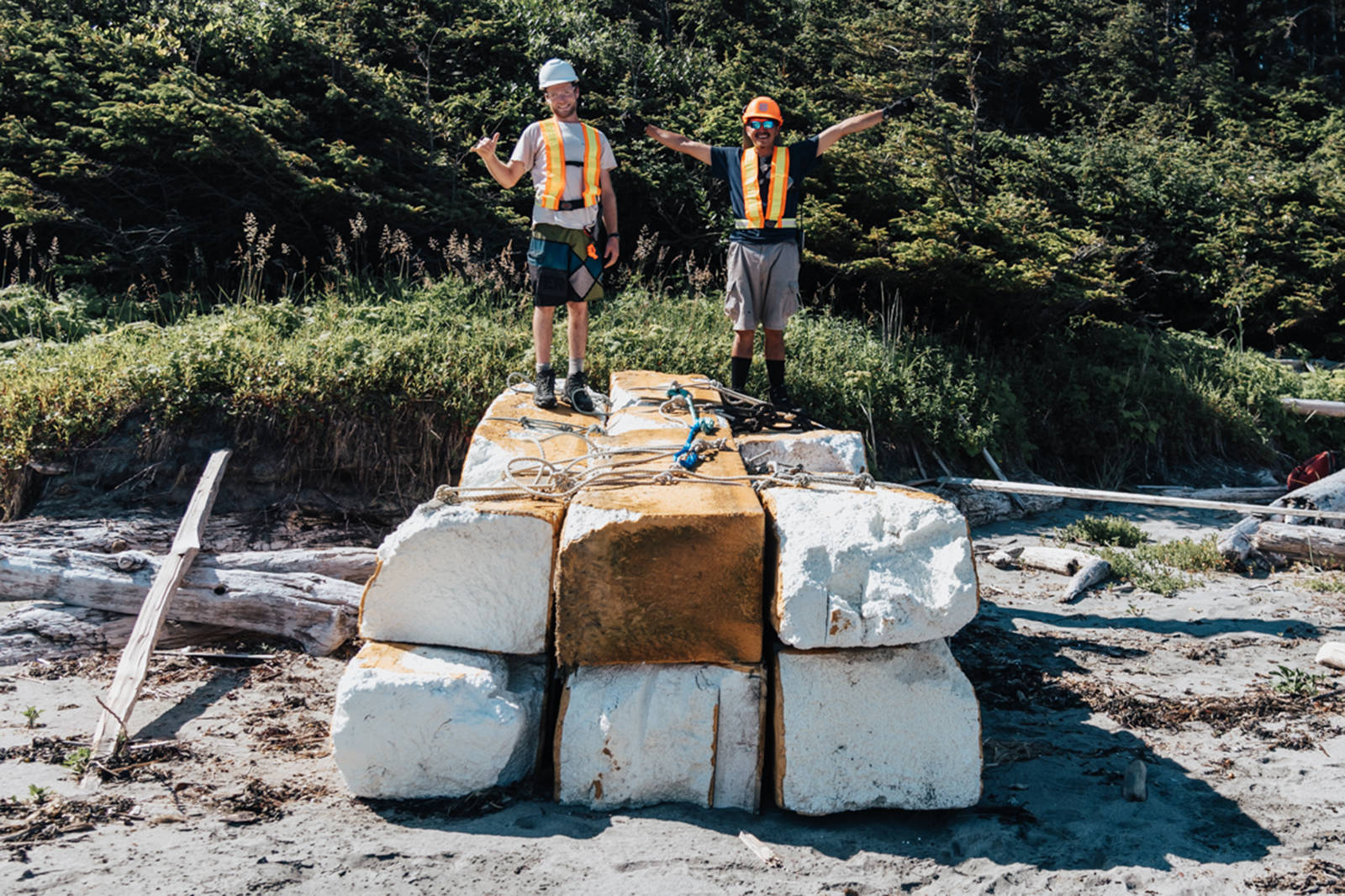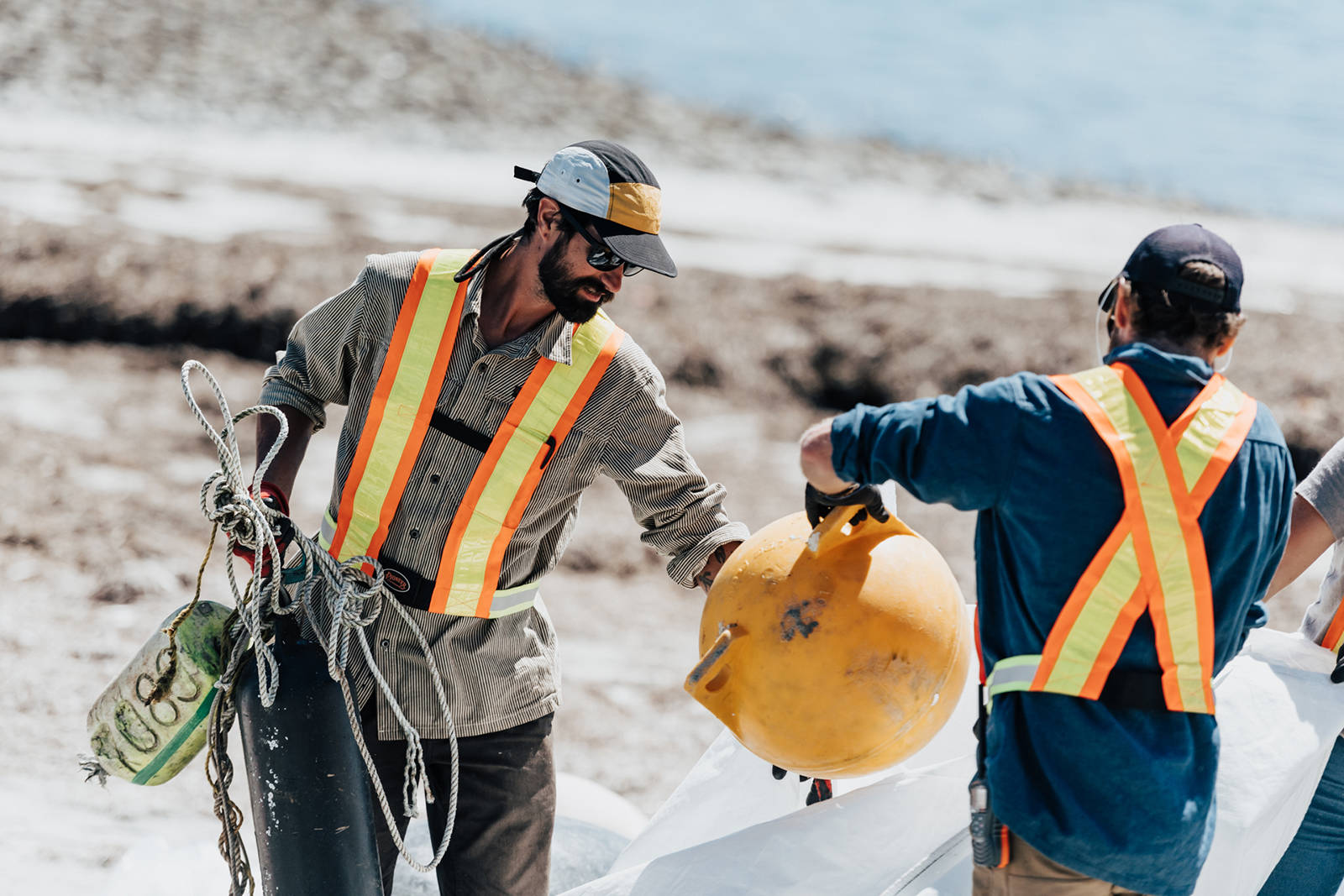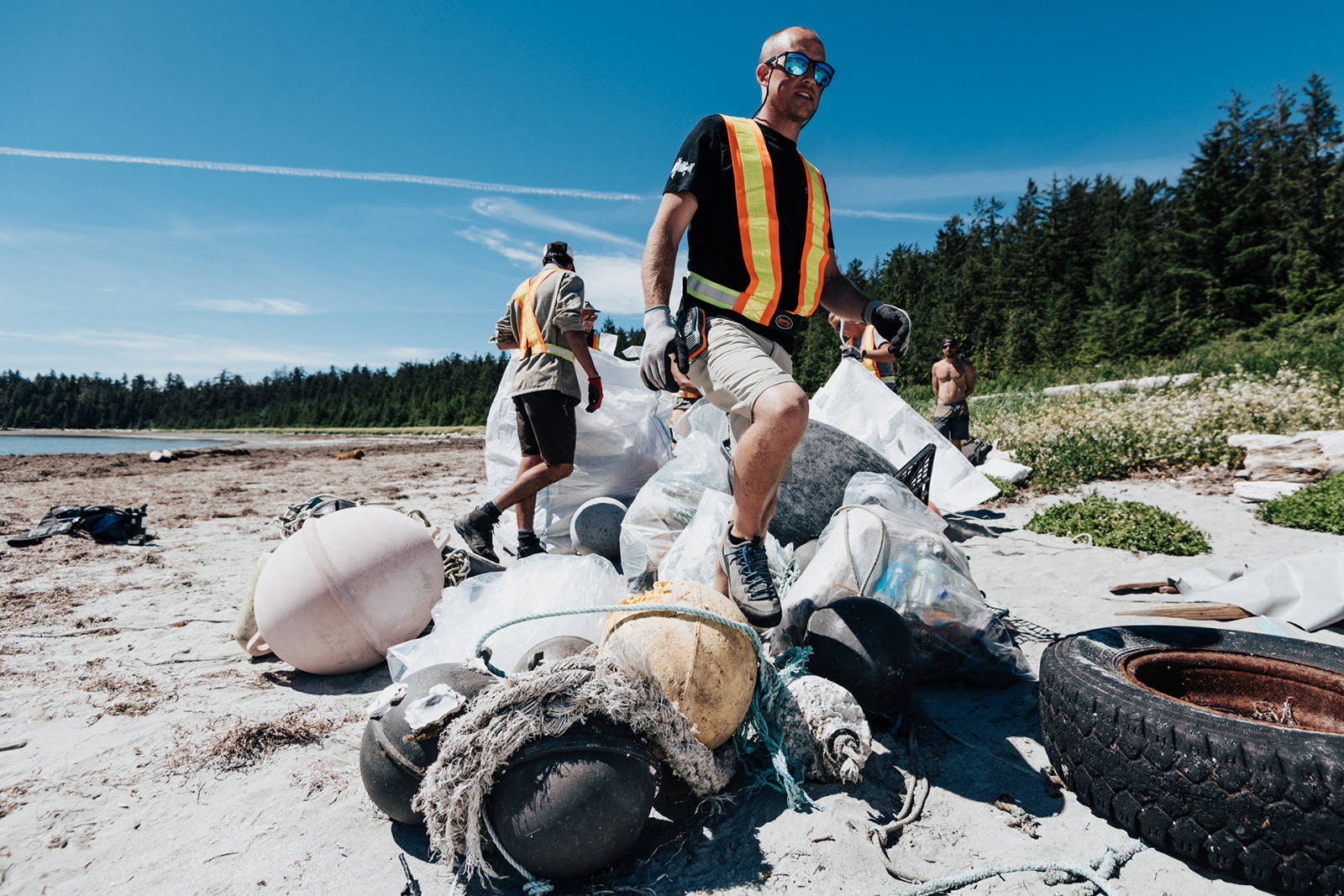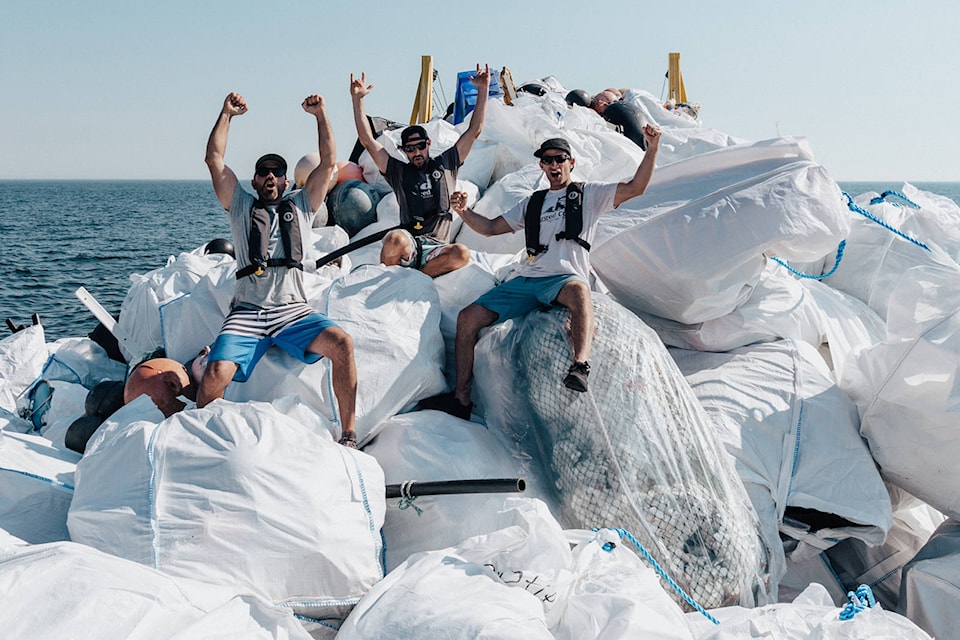The west coast of Vancouver Island is a little bit cleaner thanks to a Nanaimo-based society focused on removing trash from places most people never go.
Rugged Coast Research Society has completed its first of five major remote shoreline clean-up expeditions on the Island’s west coast.
Renny Talbot, society executive director, said the 13-day cleanup concluded June 28 and 30 tonnes of trash were removed from remote beaches where crews of four to nine people were dropped off by boat and helicopter.
“It was very challenging,” Talbot said. “Where we were cleaning, you can’t really get a boat in there. It’s very exposed shoreline, so it’s a lot of hiking and then extractions with helicopters onto barges.”
The debris hauled from the shoreline included 9.4 tonnes of plastic floats used for commercial fishing, 2.1 tonnes of Styrofoam blocks used as dock flotation and about 1,400 single-use plastic water bottles. It was hauled to Tofino where it was sorted. Of the debris collected, just 16 per cent will be sent to a landfill and the remaining 84 per cent will be recycled or reused.
The data from the cleanup will be used to inform policy-makers about the most common debris items making their way to B.C. waters and possibly point toward common pollution sources to aim for a cleaner future.
The society is currently working on four more expeditions to the Brooks/Mquqwin Peninsula and the Kyuquot areas, where clean-up teams will work with area First Nations.
“In the combination of Kyuquot-Brooks, we’ll probably get over 60 tonnes, we anticipate,” Talbot said.
He said in addition to a lot of fishing-related debris, teams are encountering plastic pellets washed up on beaches.
“They’re shipped in containers, so if there’s a release of those then you have all of these small little pellets that get washed up on the beaches and we have found a bunch of patches of those,” he said.
Sometimes more unusual items are discovered.
“One thing that was interesting that we found, actually, was a tow-behind submersible radio antenna that looks it might have come from a submarine,” he said. “It was actually too heavy for us to lift out of the area, so it’s still there, from the U.S. military.”
READ ALSO: Nanaimo-based research group needs bigger boat for coastal cleanups
Clean-up efforts starting at the end of July will collaborate with local First Nations and other partners and will include a 30-day effort in the Kyuquot/Checleseht Nation territory, the Brooks/Mquqwin Peninsula, Nootka Island and Deer Group Archipelago where the society hopes to put a substantial dent in the buildup of shoreline trash.
“I think the key there is the quantity,” Talbot said. “As we’re cleaning those beaches, in a lot of areas there’s almost as much plastic as there is logs.”
Rugged Coast Research Society’s overall clean-up project is being managed by the Coastal Restoration Society and the provincewide Clean Coast Clean Waters Initiative to remove shoreline debris and derelict vessels.
photos@nanaimobulletin.com
Like us on Facebook and follow us on Twitter



